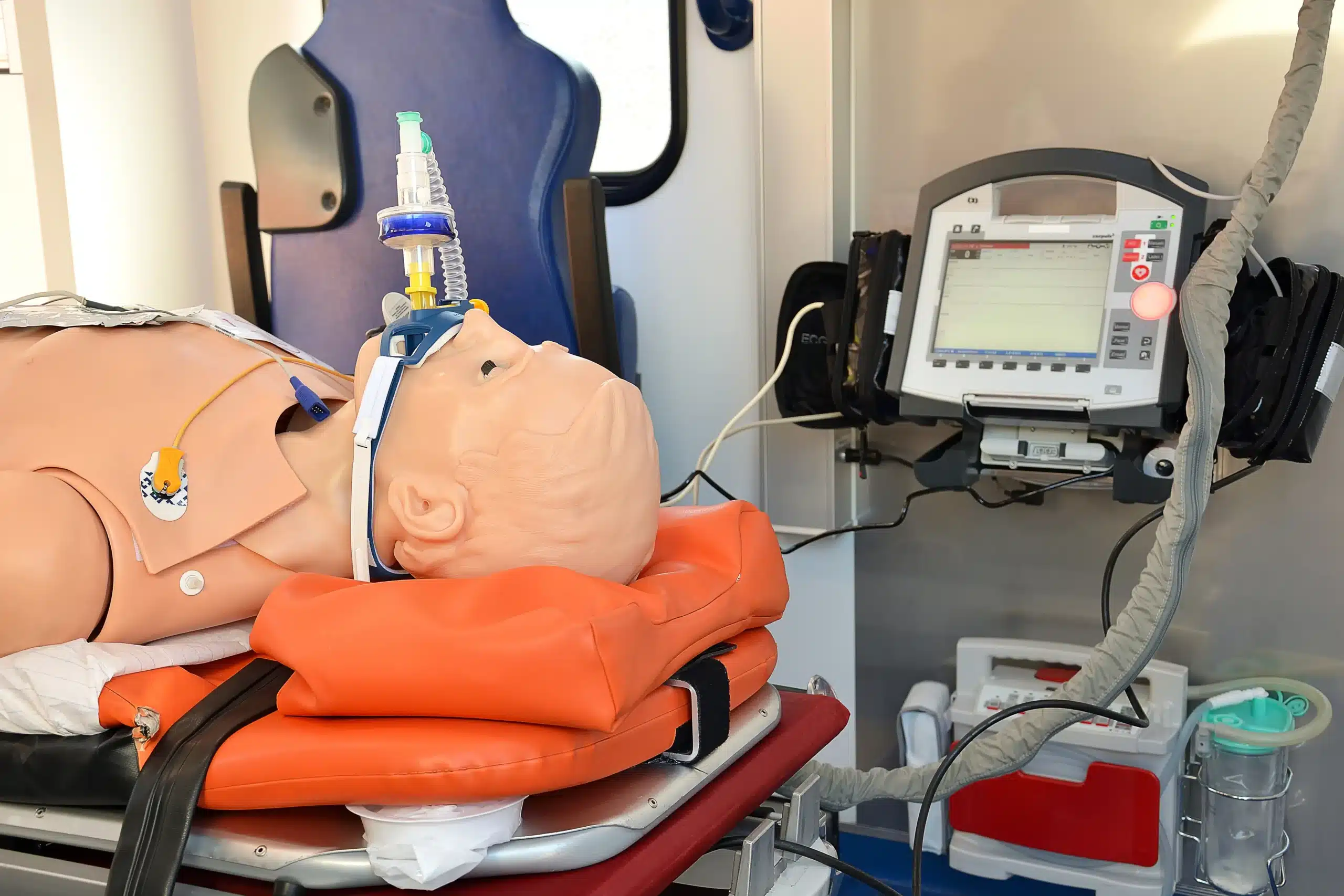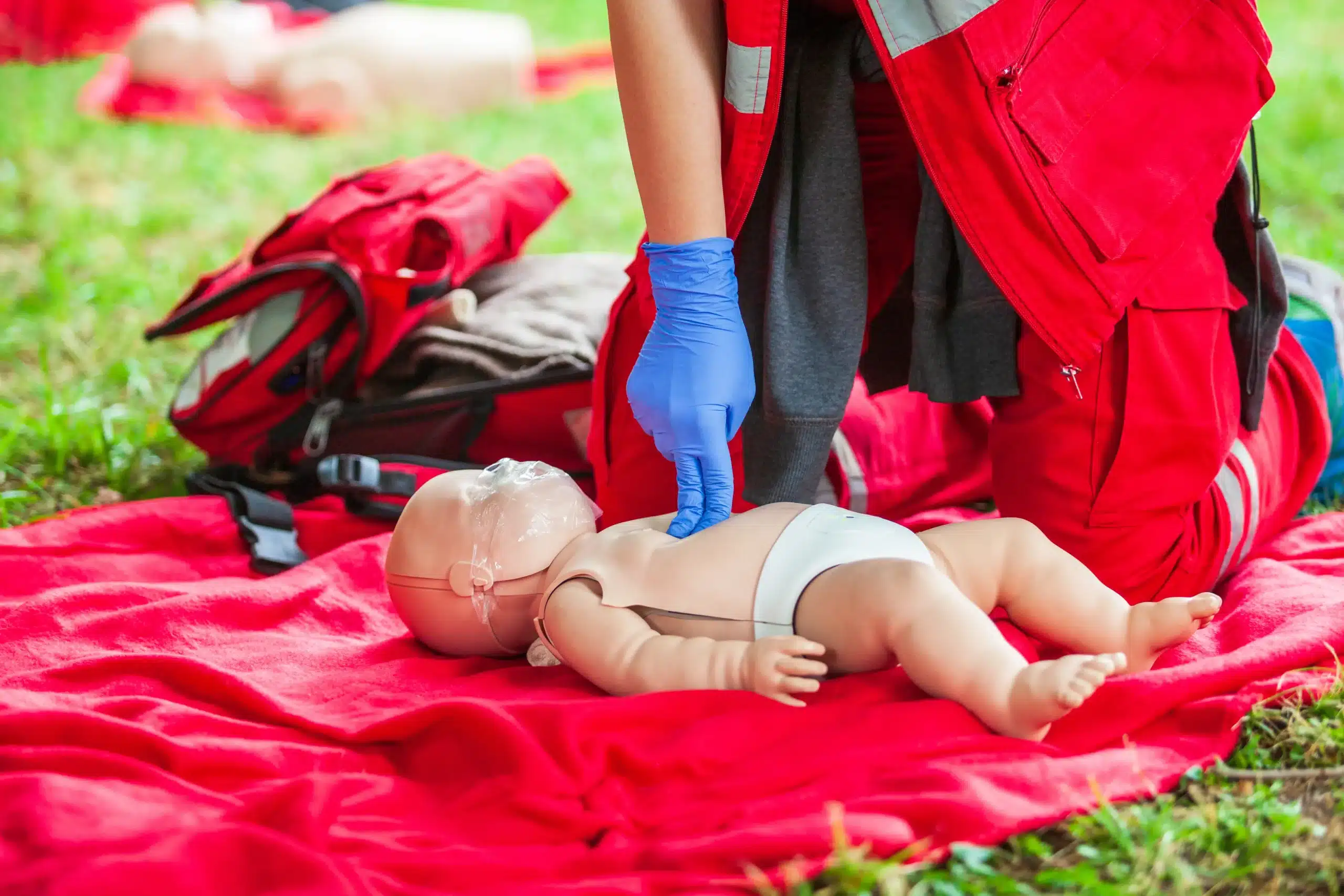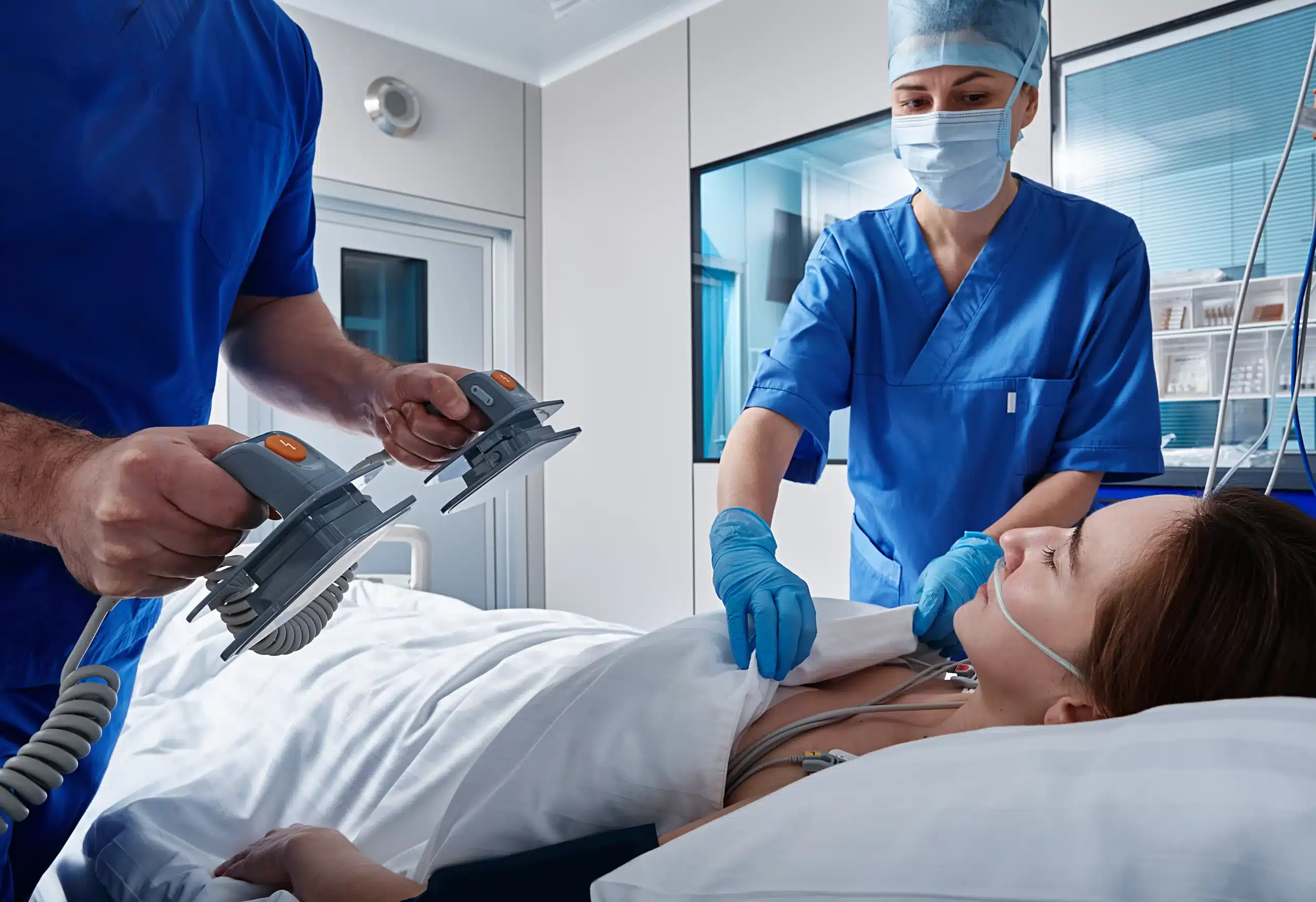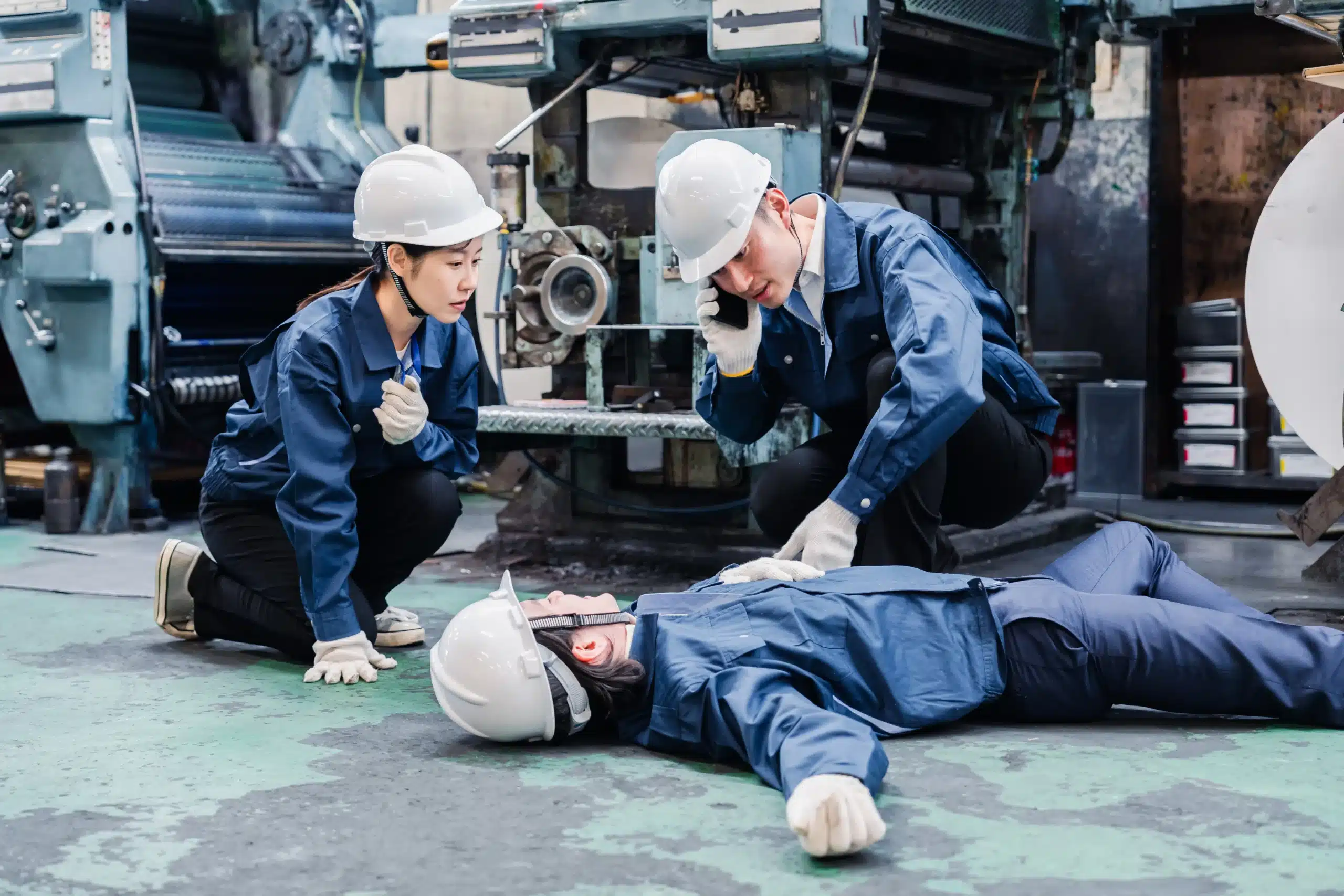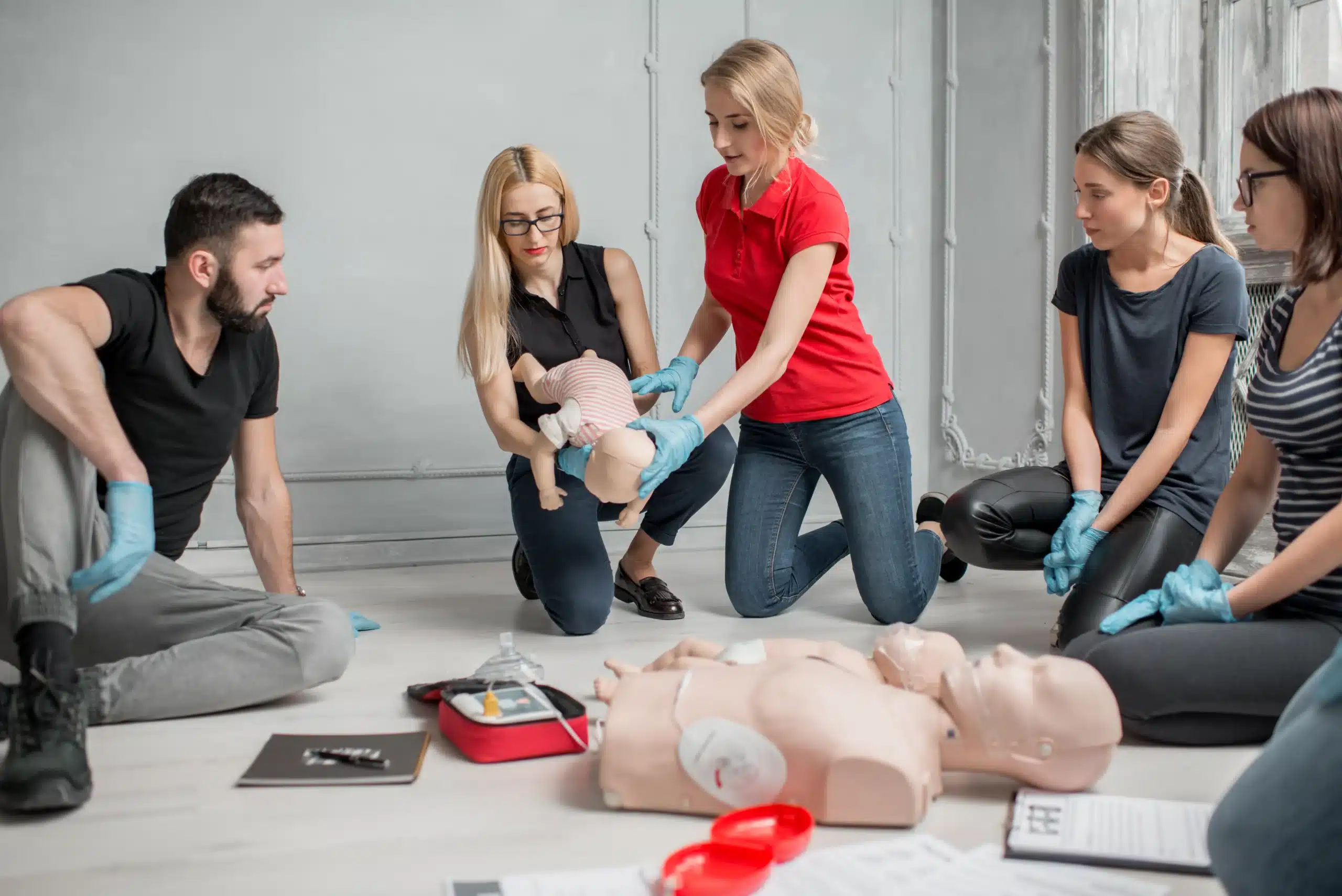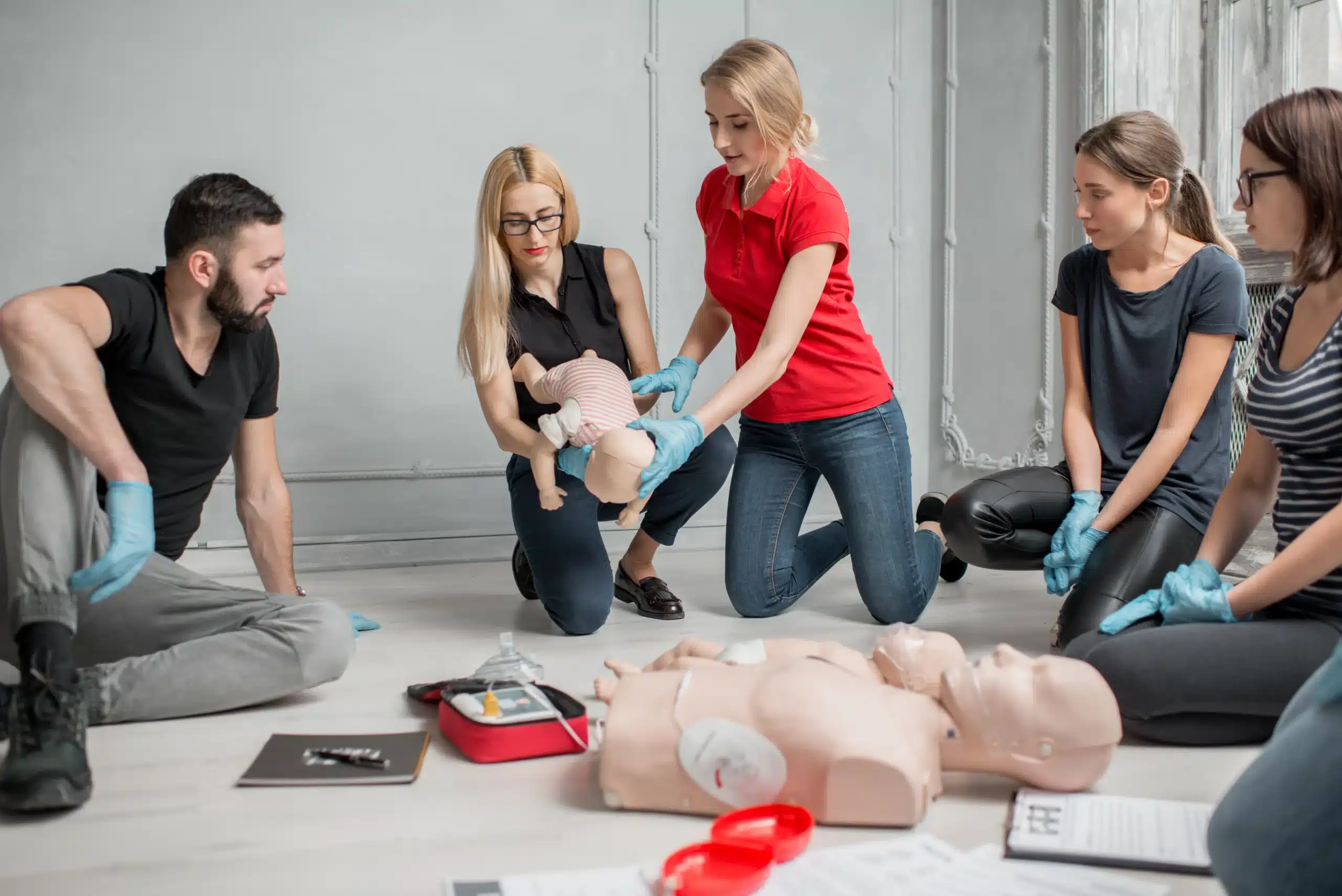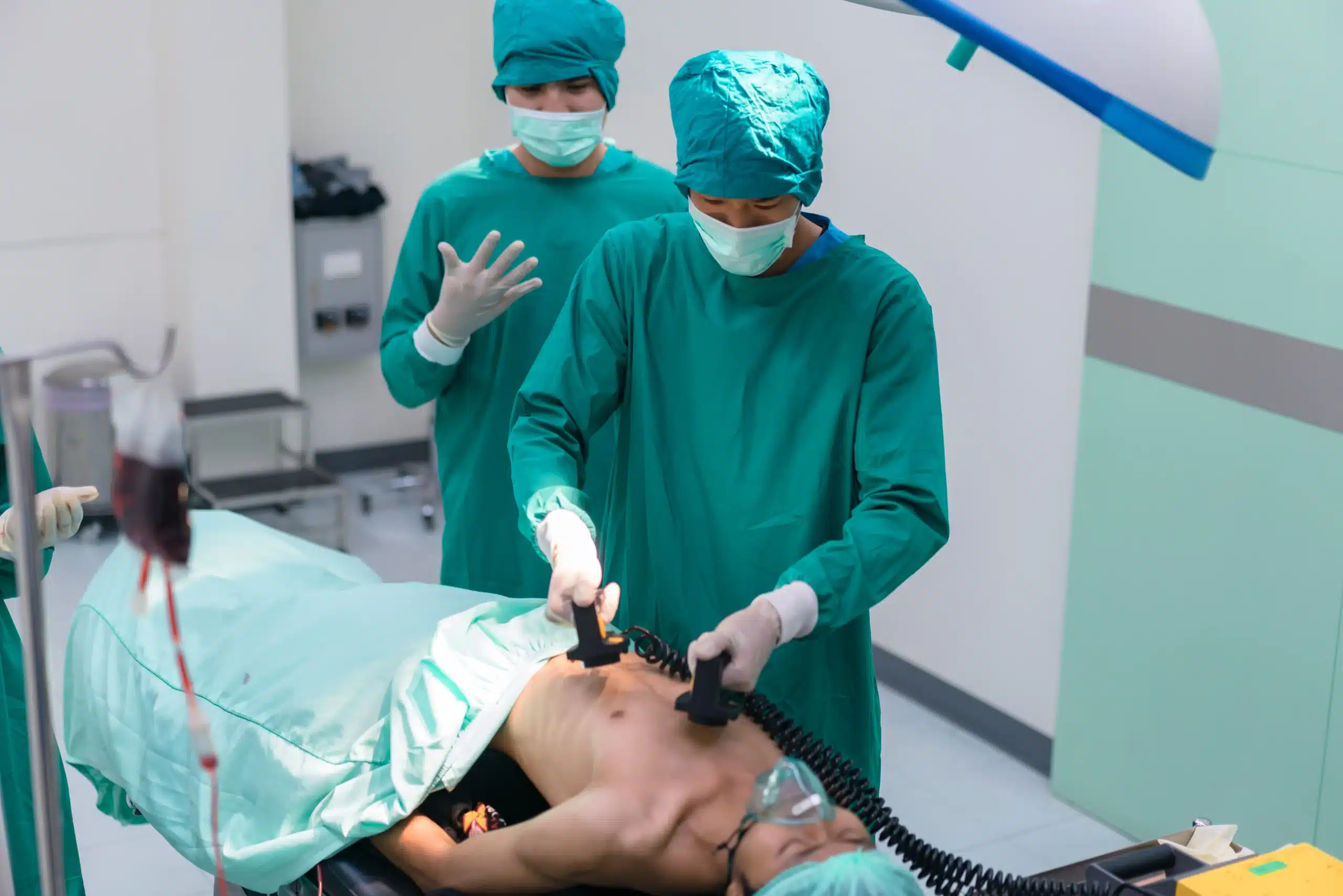Few things are more frightening than a medical emergency involving a child. Seconds can feel like hours as you wait for professional help to arrive. But what if you could be the first responder, equipped with the skills to provide immediate care? Learning pediatric CPR and first-aid in San Jose can empower you to do just that. This article explores the critical role of pediatric CPR and first aid, providing a comprehensive overview of what to expect from training, where to find certified courses in San Jose, and how these skills can make a real difference in a child’s life. We’ll also discuss the specific skills you’ll gain, the importance of instructor qualifications, and how to maintain your certification.
Key Takeaways
- Be prepared for pediatric emergencies: Learning CPR and first aid empowers you to confidently respond to medical situations involving children, potentially making a life-saving difference. Find a course that covers age-appropriate techniques and offers hands-on practice.
- Choose a CPR and first aid class strategically: Consider factors like class size for personalized attention, instructor experience, convenient scheduling, and accessible locations to maximize your learning experience.
- Stay current with your skills: Regularly practice CPR and first aid techniques and recertify as required to maintain your preparedness and confidence in responding to emergencies. Explore additional resources to stay informed about the latest guidelines.
What is Pediatric CPR and First Aid?
Pediatric CPR and First Aid training gives parents and caregivers the skills to respond to emergencies involving children and infants. It prepares you to manage illnesses and injuries in those critical first few minutes until professional help arrives. Knowing how to assess a situation, perform CPR, and deliver basic first aid can truly make a difference.
Why Parents and Caregivers Need It
Pediatricians often recommend infant CPR training because it equips parents to handle emergencies and potentially save their child’s life. You’re the first line of defense in a crisis. Thousands of children in the US need CPR in hospitals every year due to cardiac arrest. While many survive the initial event, sadly, fewer leave the hospital. Being prepared can dramatically improve the outcome.
How Pediatric CPR Differs from Adult CPR
It’s important to know that there are key differences between adult, child, and infant CPR. These differences include compression depth, hand placement, and ventilation rates. What works for an adult won’t necessarily be effective or safe for a child. Specialized certifications like PALS (Pediatric Advanced Life Support) offer a focused approach to pediatric emergencies not covered in basic CPR courses. If you’re a medical professional, PALS certification provides the advanced skills you need. The American Heart Association website offers more information on their PALS courses.
Debunking Pediatric CPR Myths
Many people hesitate to learn CPR due to common misconceptions. Some worry about performing CPR incorrectly or even injuring the child. Others are reluctant to provide mouth-to-mouth ventilations. In a hands-on class, you’ll practice on a CPR training mannequin. This allows you to learn the correct hand placement and how much pressure to apply for effective chest compressions. Learning CPR and First Aid is an investment in your family’s safety and well-being. It empowers you to act quickly and confidently in a crisis.
Where to Find Pediatric CPR & First Aid Classes in San Jose
Finding the right pediatric CPR and first aid class can feel overwhelming, but several excellent resources are available in San Jose and the surrounding areas. Here are a few options to explore:
Milpitas CPR Classes
Milpitas CPR Classes offers a range of American Heart Association (AHA) courses, including pediatric CPR and First Aid. These courses equip caregivers with essential life-saving skills for infants, children, and adults. For healthcare providers, their BLS course provides comprehensive training.
American Red Cross
The American Red Cross is a well-known and respected resource for emergency preparedness. They offer CPR and First Aid classes in San Jose focusing on pediatric care. Taught by certified instructors, these courses meet OSHA compliance standards, making them a good option for professional development.
Safety Training Seminars
Safety Training Seminars, a woman-owned AHA Training Center, offers high-quality AHA courses in nearby Milpitas, convenient for San Jose residents. They provide pediatric CPR and First Aid training, along with advanced courses like ACLS and PALS.
CPR Heart Center
CPR Heart Center specializes in CPR and First Aid training, including pediatric CPR, with a focus on preparing participants to handle emergencies involving children.
ProCPR
For a flexible learning experience, ProCPR offers online CPR and First Aid training. This format works well for busy parents and caregivers who want to learn at their own pace. While online courses are convenient, remember that in-person classes offer valuable hands-on practice with a certified instructor.
What Happens in a Pediatric CPR & First Aid Class?
Knowing what to expect can help you feel more prepared and confident going into a pediatric CPR and first aid class. Here’s a glimpse at the typical curriculum:
Core Curriculum and Skills You’ll Learn
Pediatric CPR and first aid classes cover essential skills to help you respond effectively to emergencies involving infants and children. You’ll learn to recognize the signs of a medical emergency, including choking, cardiac arrest, and breathing difficulties. The curriculum also teaches how to assess the scene for safety and call for emergency medical services. You’ll also practice basic first aid techniques for common childhood injuries like cuts, burns, and allergic reactions. The American Red Cross offers training in these areas, including specific instruction on treating children and infants.
Certification Process and Validity
After successfully completing the course and demonstrating proficiency in the required skills, you’ll receive a certification card from a recognized organization like the American Heart Association or the American Red Cross. This certification is typically valid for two years. Remember to check with your certifying organization for specific recertification requirements.
Hands-on Training
A significant part of these classes involves hands-on practice. You’ll work with mannequins designed for infant and child CPR to develop the muscle memory and confidence needed to perform compressions and rescue breaths effectively. You’ll also have opportunities to practice bandaging, splinting, and other first aid techniques. This hands-on learning is invaluable for real-life emergencies.
Age-Specific Techniques
Because infants and children have different physiological needs than adults, the techniques used in pediatric CPR and first aid are also distinct. You’ll learn the correct hand placements, compression depths, and ventilation rates for both infants and children. Understanding these age-specific techniques is crucial for providing safe and effective care. For example, infant CPR often involves using two fingers for compressions, while child CPR might use one or two hands, depending on the child’s size.
Compare Class Costs & Value in San Jose
Shopping for CPR classes? It’s smart to compare prices, but remember that value is just as important as the sticker price. Consider what’s included in the course fee, like certification cards, course materials, and instructor experience. A slightly higher price tag might be worth it for a class that offers more comprehensive training and support.
Price Ranges & What Affects Cost
CPR class costs in San Jose can vary based on the type of certification. Basic CPR and First Aid classes tend to be more affordable than advanced certifications like ACLS (Advanced Cardiovascular Life Support) or PALS (Pediatric Advanced Life Support). The course format also plays a role. In-person classes sometimes cost more than blended learning (online + in-person skills sessions) due to facility and instructor expenses. For more information on CPR class pricing, check out our CPR Certification in San Jose guide.
Current Discounts & Package Deals
Look for training centers that offer discounts, especially if you’re certifying a group or combining multiple certifications. Some providers, like the Red Cross, offer periodic discounts on training supplies and other resources. Keep an eye out for package deals that bundle CPR with First Aid or other related certifications—these can often save you money compared to taking the courses separately.
In-Person vs. Online
Choosing between in-person and online learning depends on your learning style and schedule. In-person CPR classes provide hands-on practice and direct interaction with an instructor, which can be beneficial for tactile learners. Blended learning, which combines online coursework with an in-person skills session, offers more flexibility. Providers like the Red Cross and the American Heart Association offer various course formats, so you can choose the best fit for your needs. CPR Heart Center offers both in-person and blended learning options.
Instructor Qualifications & Experience
Knowing your instructor’s qualifications is key when choosing a Pediatric CPR and First Aid class. It ensures you’re learning the most up-to-date, evidence-based practices. Here’s what to look for:
Required Teaching Certifications
Instructors should hold certifications from nationally recognized organizations like the American Heart Association (AHA). These certifications mean instructors have completed rigorous training and demonstrated competency in pediatric emergency care. AHA certification, in particular, ensures adherence to the latest guidelines and techniques, giving you confidence in the quality of instruction.
EMS Backgrounds
Many instructors bring real-world experience from Emergency Medical Services (EMS). This background provides practical insights into handling pediatric emergencies, going beyond textbook knowledge. Instructors with EMS experience can often share valuable scenarios and answer your questions based on their firsthand knowledge, making the training more engaging and relevant. For more information about our instructors’ qualifications, visit our CPR and First Aid certification page.
Ongoing Education & Proficiency
The medical field is constantly evolving. Look for instructors committed to ongoing education to stay current with the latest practices. The AHA’s Resuscitation Quality Improvement (RQI) program is one example of how healthcare professionals maintain proficiency in resuscitation techniques. Knowing your instructor participates in continuing education programs like RQI demonstrates their dedication to providing high-quality training and staying at the forefront of pediatric emergency care.
Skills You’ll Gain From Training
Learning pediatric CPR and first aid equips you with essential skills to respond effectively to emergencies involving infants and children. These skills empower you to act confidently and potentially save a life. Let’s break down the key skills you’ll develop:
Recognize Pediatric Emergencies
From a child suddenly struggling to breathe to a nasty fall resulting in a head injury, emergencies can happen anytime. This training sharpens your ability to quickly assess the situation and recognize the signs of distress in children. You’ll learn to differentiate between mild incidents and true emergencies, enabling you to respond appropriately and efficiently. Knowing how to identify the signs of a medical emergency, like choking or cardiac arrest, is the first step toward providing effective care. This rapid assessment can make all the difference. Resources like those available from Kidsville Pediatrics emphasize how important it is for parents to be prepared.
Perform Age-Appropriate CPR
CPR for a baby is different than CPR for a toddler or older child. This training teaches you the correct techniques for each age group, ensuring you deliver safe and effective chest compressions and rescue breaths. You’ll learn how to adapt your approach based on the child’s size and developmental stage. The American Heart Association suggests introducing basic emergency response skills to children as young as four, emphasizing the importance of age-appropriate instruction.
Administer First Aid for Common Injuries
Cuts, scrapes, burns, and sprains are common childhood injuries. This training covers essential first aid techniques for these and other frequent incidents. You’ll learn how to clean and dress wounds, control bleeding, manage burns, and stabilize injuries until professional help arrives. Taking a CPR and first-aid certification course will prepare you to handle a wide range of medical emergencies, giving you the confidence to act quickly and effectively.
Use AEDs on Children
Automated External Defibrillators (AEDs) can be life-saving in cases of sudden cardiac arrest. This training teaches you how to safely and effectively use an AED on a child. You’ll learn the specific protocols for pediatric AED use, ensuring you can deliver the appropriate level of electrical therapy if needed. The American Heart Association’s Heartsaver Pediatric First Aid CPR AED course provides comprehensive instruction on using AEDs for children, equipping you with this critical skill.
Choose the Right Class
Finding the right Pediatric CPR and First Aid class means thinking about a few key things. It’s not just about learning the skills—it’s also about feeling comfortable and confident in the learning environment. Here’s what to look for:
Class Size & Individual Attention
Smaller classes often mean more personalized instruction. This gives you more chances to ask questions, practice your skills, and get feedback from the instructor. The Red Cross emphasizes the expertise of their instructors and the careful development of their courses, showing a real commitment to quality training. Look for classes that focus on individual attention, so you get the most out of your training.
Scheduling Options
Life gets busy, so it’s important to find a class that fits your schedule. Many providers offer a variety of options, including weekday and weekend classes at different times. Some organizations, like the Red Cross, offer blended learning that combines online learning with in-person skills sessions. Milpitas CPR Classes also highlights flexible scheduling, with courses offered daily. Explore the different options to see what works for you.
Location & Accessibility
A convenient location makes all the difference when you’re taking a class. Look for training centers that are easy to get to. Think about how close it is to your home or work, whether there’s parking, and if you can take public transportation. Milpitas CPR Classes serves the Milpitas, San Jose, and Santa Clara areas, while others, like AllCPR San Jose, may have specific training spots within San Jose. Pick a location that’s easy to reach to make attending the class that much easier.
Prepare for Your Class
What to Bring
For in-person classes, wear comfortable clothing since you’ll be actively practicing skills. You won’t need to bring much else. Your CPR and First Aid certification will be provided upon successful completion of the course, typically valid for two years. Some providers offer blended learning, allowing you to do your coursework online and then demonstrate your skills in person with a certified instructor. Check with your chosen provider for their specific requirements.
Mindset & Expectations
Come ready to actively participate. These classes are hands-on, and the more you engage, the more you’ll learn. It’s normal to feel a little nervous, especially when learning infant CPR. Know that pediatricians recommend this training for parents and caregivers. Understanding the importance of early CPR and its impact on cardiac arrest survival can be motivating. The goal is to build the skills and confidence to respond effectively in an emergency. Regularly refreshing your CPR knowledge is important, so view this class as the first step in a lifelong commitment to being prepared. Think of it as an investment in yourself, your family, and your community.
Benefits of Training
Knowing how to help a child in a medical emergency can make all the difference. Pediatric CPR and first aid training equips you with the skills and confidence to respond effectively, potentially saving a life. From recognizing the signs of distress to administering appropriate care, the benefits of this training extend far beyond the classroom.
Build Confidence in Emergencies
Emergencies involving children can be incredibly stressful. Training helps parents, caregivers, and anyone working with kids develop the confidence to stay calm and take charge when it matters most. Knowing infant CPR empowers parents to handle emergencies and potentially save their child’s life, as advised by pediatricians. This peace of mind is invaluable. Instead of feeling helpless, you’ll be prepared to take action.
Improve Response Time
Every second counts in a medical emergency. The quicker you recognize a problem and begin providing assistance, the better the outcome. Studies show that early CPR can significantly improve cardiac arrest survival rates. Training helps you identify warning signs and react swiftly, increasing the chances of a positive outcome.
Empower Yourself & Be Prepared
CPR and first aid training provides you with practical skills and knowledge to handle various medical situations. These courses cover everything from treating minor injuries to performing life-saving techniques. This training only takes a few hours and can equip you with the skills and confidence to act in an emergency. Being prepared means you can make a real difference in a critical situation, whether it’s your own child, a family member, or a stranger in need.
Maintain & Update Your Skills
After earning your pediatric CPR and first aid certification, staying sharp is key. Regular practice and keeping your certification current ensures you’re always ready to help a child in need. Here’s how:
Practice Regularly
The skills you learn in your pediatric CPR and first aid class are like any other—they fade if you don’t use them. Regular practice is crucial for building muscle memory and confidence. Think of it like riding a bike: you never truly forget, but regular practice keeps those skills honed. Set aside time each month to review the techniques. You can practice on a CPR manikin or visualize scenarios to keep the steps fresh in your mind. This consistent reinforcement will help you respond effectively under pressure. Bay Area CPR offers resources for ongoing practice.
Meet Recertification Requirements
CPR and first aid certifications typically expire every two years. Staying current with the latest guidelines and best practices is essential, especially in pediatric care. Check your certification card for the expiration date and plan to recertify before it lapses. Milpitas CPR Classes makes finding a recertification course that fits your schedule easy. This ensures your skills and knowledge are up-to-date, keeping you prepared for any pediatric emergency.
Find Additional Learning Resources
Beyond your initial training and recertification, many resources can expand your knowledge. The American Red Cross offers online resources, including manuals, videos, and interactive tools. These resources can refresh your skills, teach new techniques, and keep you informed about changes in pediatric CPR and first aid guidelines. Take advantage of these resources to deepen your understanding and maintain your preparedness.
Related Articles
- CPR Certification in San Jose: Your Complete Guide – Milpitas CPR Classes
- CPR Training in Santa Clara: A Complete Guide – Milpitas CPR Classes
- Why CPR Is Vital in Healthcare & How to Get Certified
- Debunking Common CPR Myths for Better Preparedness
- Group First-aid & CPR Discount Classes in Milpitas, CA
Frequently Asked Questions
Is online pediatric CPR training enough, or do I need an in-person class?
Online courses offer a convenient way to learn the basics, but in-person training provides hands-on practice and personalized feedback from a certified instructor. This is especially valuable for mastering CPR techniques and gaining confidence in your abilities. Many organizations offer blended learning, combining online coursework with an in-person skills session, giving you the best of both worlds.
How often do I need to renew my pediatric CPR and first aid certification?
Certifications are typically valid for two years. Check with your certifying organization (like the American Heart Association or American Red Cross) for their specific renewal requirements. Staying current with the latest guidelines ensures you’re always prepared to provide the most effective care.
What if I’m nervous about performing CPR on a child?
It’s completely normal to feel apprehensive. These classes are designed to build your confidence through hands-on practice and guidance from experienced instructors. Remember, any attempt to help is better than no attempt at all. The skills you learn can make a real difference in a child’s life.
What’s the difference between CPR and first aid?
CPR focuses on restoring breathing and circulation in someone who has stopped breathing or has no pulse. First aid covers a broader range of medical emergencies, from minor injuries like cuts and burns to more serious situations like choking or allergic reactions. Both are valuable skills to have in any emergency.
Where can I find pediatric CPR and first aid classes near me?
Several organizations offer these courses, including the American Red Cross, the American Heart Association, and various local training centers. Check online or contact your local hospital or community center for recommendations. When choosing a class, consider factors like class size, instructor qualifications, and scheduling options.
